Best water garden plants – enhance your water feature with these leafy options
These plants for water gardens will add interest, attract wildlife, and help to keep the water healthy and algae free
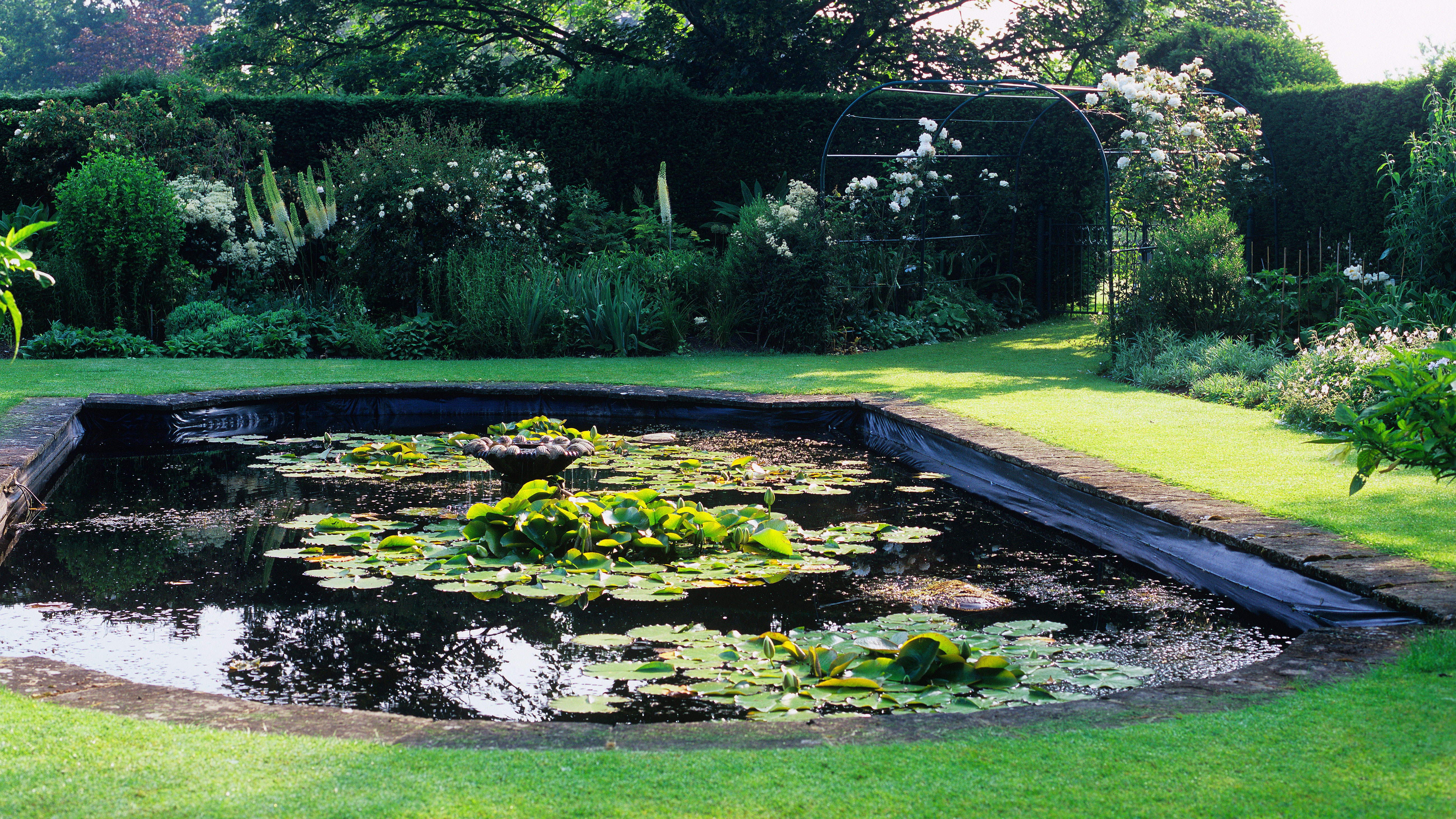

Rachel Crow
Adding water garden plants to a water feature in your backyard will not only look beautiful and help it to blend into the surrounding planting but will also keep the water healthy and algae-free.
The best options will provide layers, as in nature, with submerged and floating plants on the water, deep and shallow marginal planting around the edges, bog plants in the surrounding waterlogged ground, and gradually moving into planting suitable for the area.
Oxygenating plants, especially ones with large leaves, such as water lilies, will help keep the water clean and fresh: they will compete with the algae for nutrients and also act as homes for lifeforms that will eat the algae. Marginal plants will likewise consume the excess nutrients and prevent algae build-up. Whatever type of water feature you have in your yard, there is a plant to suit.

A gardening writer and photographer, Leigh Clapp has over 25 years' experience of photographing beautiful gardens and writing on all manner of things horticultural. Leigh’s work appears in magazines, newspapers and books, both in the UK and abroad, including Period Living, Country Life, and Gardens Illustrated. She is also the author of Vertical Gardens, available on Amazon.
9 of the best water garden plants to grow
Many of the best water garden plants are marginals, which grow happily around the edge of a garden pond or pool – this includes those suited to shallower and deeper water. They enhance the look of a water feature and are also an excellent wildlife garden idea, providing shelter and food for visiting wildlife.
Among the best pond plants are 'submergents', which, as the name suggests are planted submerged in deep water. These are important oxygenators and the most beneficial to maintaining healthy water in your water garden. They 'form the foundation of a balanced aquatic ecosystem, providing a vital role in nutrient absorption, particulate filtration, and oxygenation,' explain the experts at Aquascapes Unlimited aquatic nursery in Pennsylvania.
Floating plants, like submergents, are also excellent oxygenators – and are a popular addition around the edges of natural swimming pools.
Lastly are bog plants, well suited to waterlogged soil surrounding a water garden.
Add some of these attractive water garden plants to your water garden planting palette.
1. Typha minima – dwarf reed mace

Dwarf reed mace is a more manageable bulrush, making it ideal for small ponds and aquatic container gardening ideas. Do plant it in a basket, though, as it will spread easily.
It grows in full sun to part shade and you can divide plants in spring to propagate. Its mature height is 30 inches, with a spread of approximately 17 inches.
2. Caltha palustris – marsh marigold
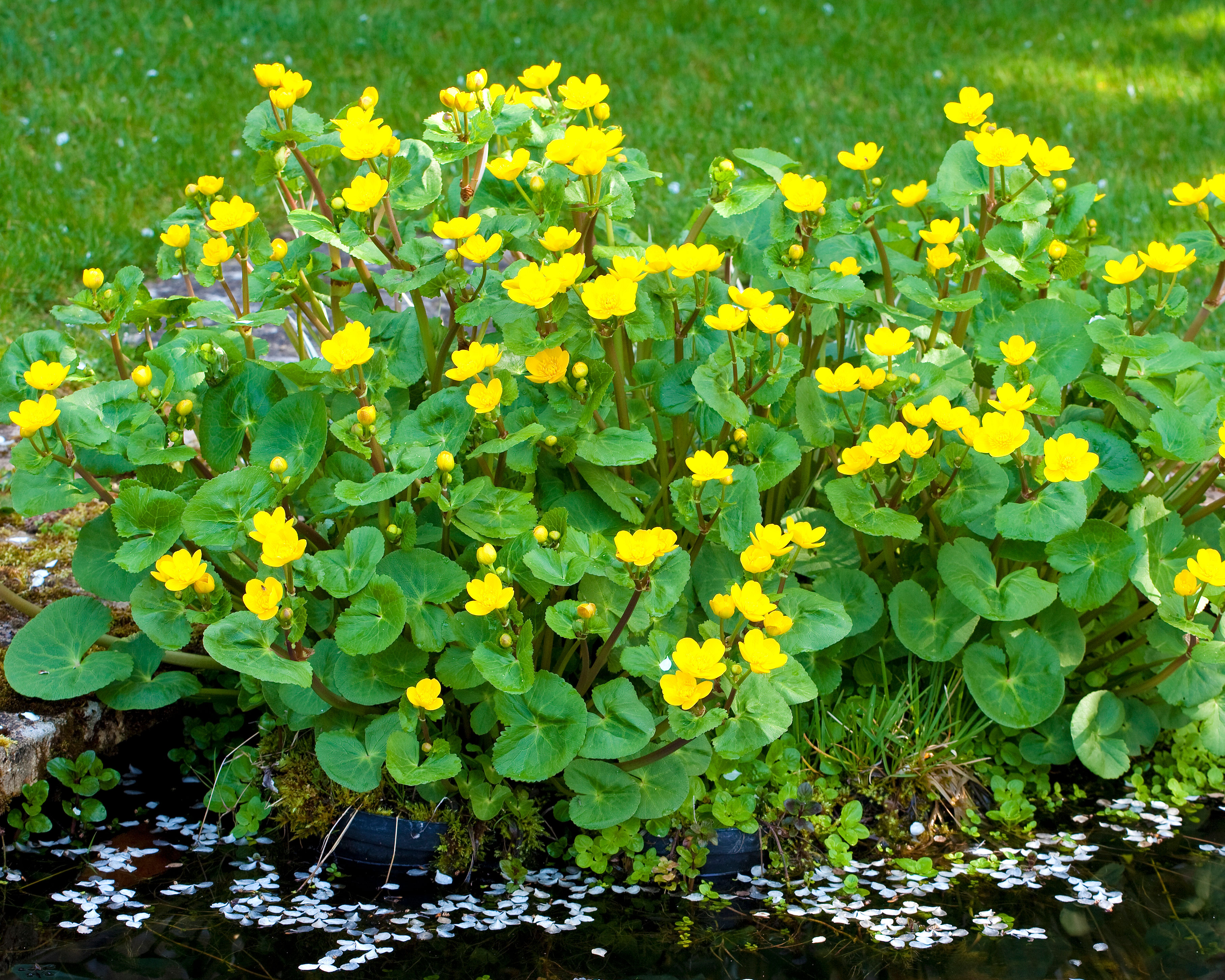
Marsh marigold is a rhizomatous herbaceous perennial with clusters of yellow flowers in late spring. It grows wild along streams and in shallow water around ponds, so is a useful marginal, pond, and bog garden plant, and is also an attractive plant for pollinators.
It will 'hold its foliage through mid-summer if it is provided with a cool, shady spot in a water garden, otherwise, it will naturally go dormant by the end of June,' explain the experts at Aquascapes Unlimited.
If planting marsh marigold in water, use a basket. It will grow to around 10 inches with a spread of about 17 inches.
3. Carex elata 'Aurea' – golden sedge
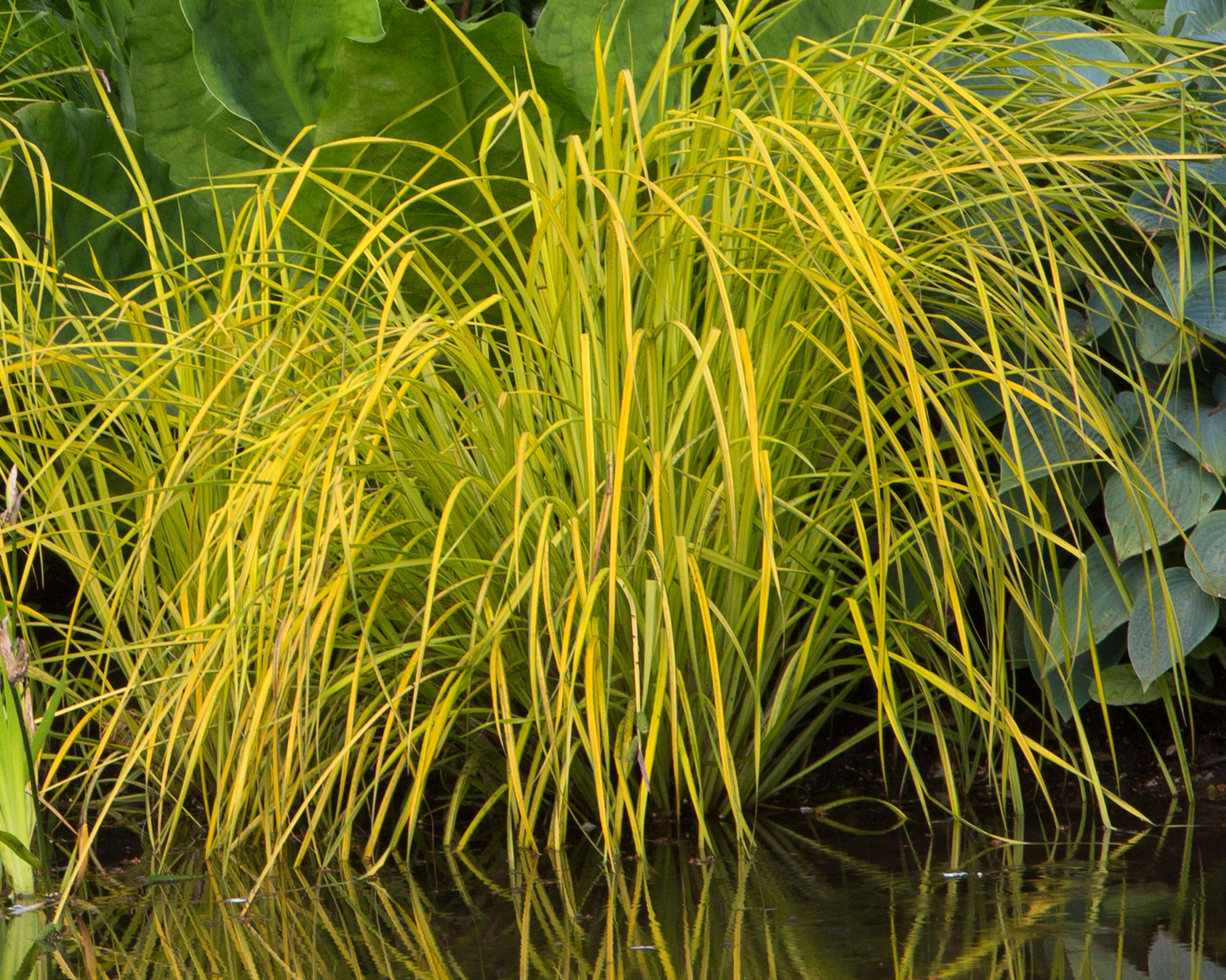
Golden sedge adds color for marginal planting with its gracefully arching, bright yellow leaves. In early summer it has small blackish flower spikes.
Compact clumps reach a height of about 30 inches and spread of 20 inches. This water garden plant works beautifully against hostas and ferns on the edge of ponds where its golden foliage can reflect in the water.
4. Nymphaea – water lilies
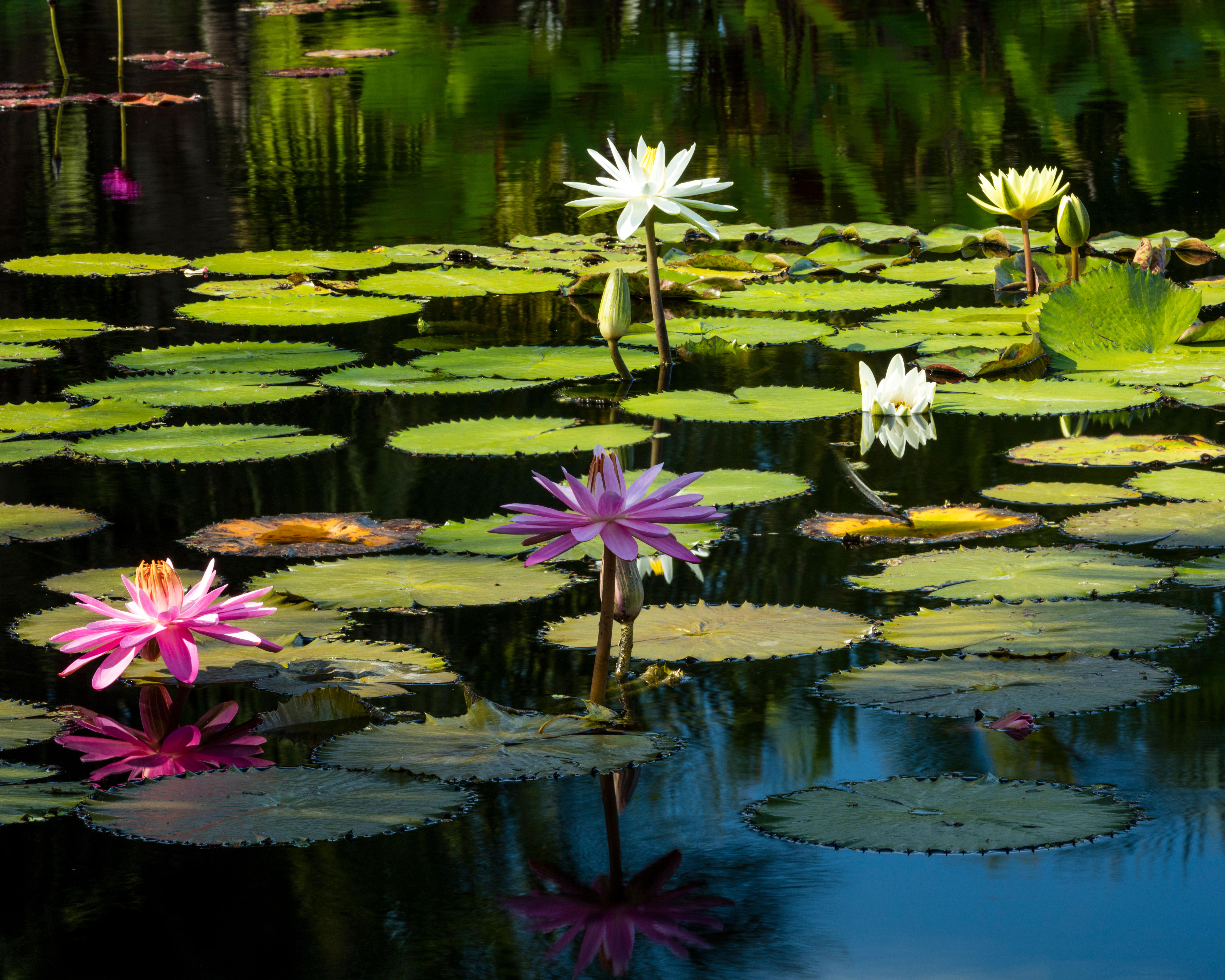
Water lilies have many varieties, some of which are hardy, including large and dwarf forms. They grow from tubers planted in pots below the water and flower from spring to summer.
These aquatic beauties prefer still, calm water for a true Monet-inspired scene. Their characteristic lily pads also provide shelter for aquatic wildlife, so are a quintessential addition as water garden plants if you're building a pond.
'Nymphaea odorata naturalizes quickly and can be quite nice if that is what you are seeking, but proceed with care if you are dealing with a small pond,' warn the experts at Aquascapes Unlimited, as otherwise, these floating beauties can quickly take over.
'They are a wonderful plant for shading the surface of the water and providing cover for fish.'
5. Candelabra primulas

Candelabra primulas are lovely fringing a pond or stream, and flower from May to June in colors of pink and yellow shades.
They are long-lived and hardy. Plant in drifts with ferns and hostas in sun, or they do well in part shade as they are among the best shade plants. If you are looking to attract butterflies and other pollinators, they enjoy these spires of pretty flowers.
Candelabra primulas will grow to a height of around 23 inches and spread to 11 inches.
6. Iris versicolor – blue flag iris

This native of North America, Iris versicolor, or blue flag, is a water-loving iris with purple-blue flowers and arching sword-like leaves.
These water garden plants grow from rhizomes and it is important that they are planted at the correct depth – not so deep that they won't produce flowers, but not too shallow so that they will be overexposed to the elements.
Catherine Moravec of Colorado Yard Care recommends 'planting the rhizome, so the bottom of the leaf fan is just below the surface, and the rhizome is flat, just under the surface. Make sure to orient your leaves so that the fan is facing where you want to create your display.'
Iris species and cultivars make up a large family, which includes many that grow in shallow water and pond margins, such as the blue and yellow flags, and Japanese cultivars, which are popular in Japanese garden ideas. They are among the flowers that attract bees and other pollinators, and look particularly attractive planted en masse to line a pond or waterway, and are also at home in bog gardens. They do best in full sun.
7. Gunnera
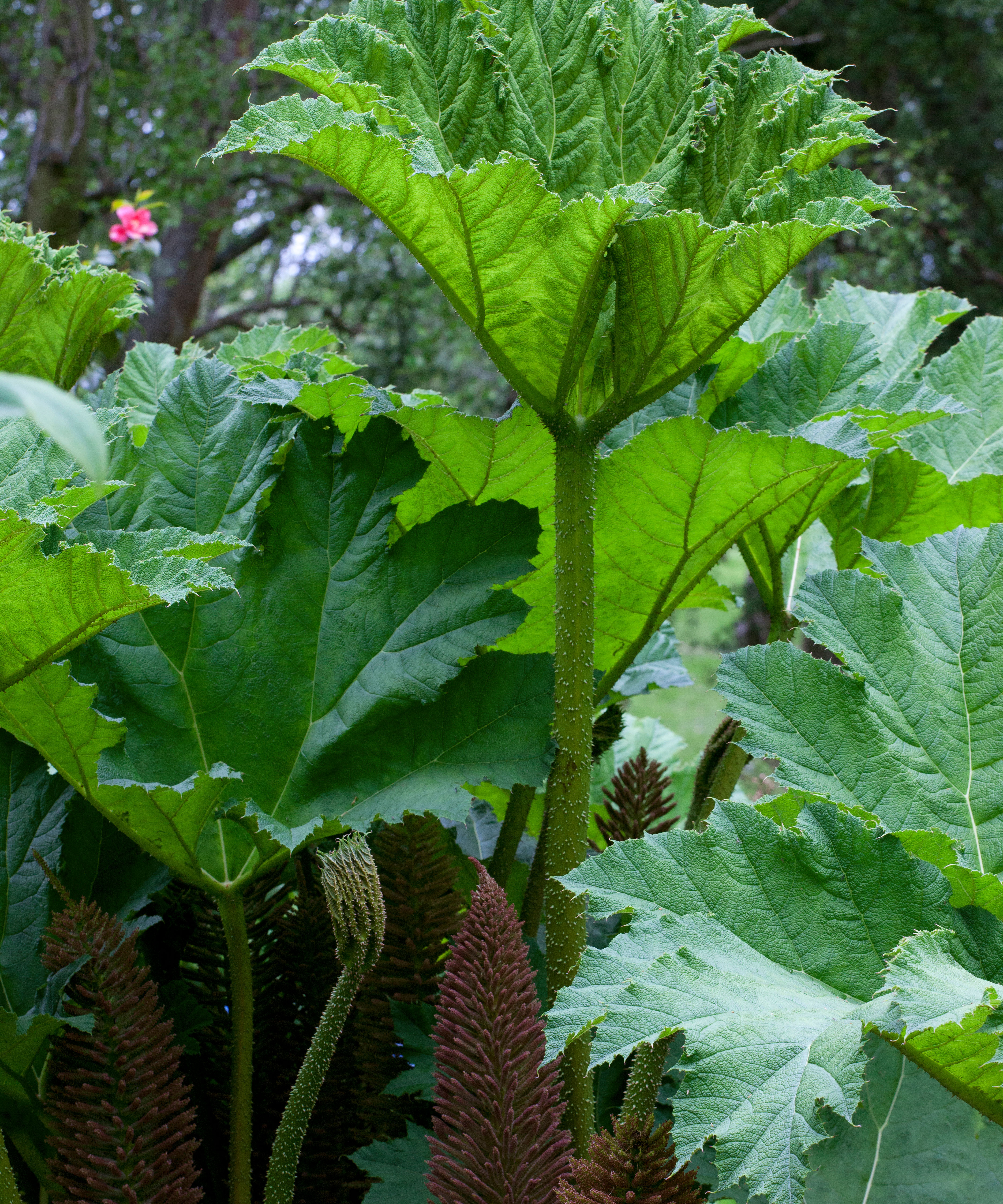
Gunnera is a large architectural plant for moist, boggy soil, on the margins of ponds. These Jurassic-like water garden plants shoot up each year and have the largest leaves of any hardy perennial.
Protect from wind and allow them plenty of space. Cut back in the fall and then divide plants in early spring. There are also smaller varieties available if you don’t have the room to accommodate the giant forms.
8. Hostas
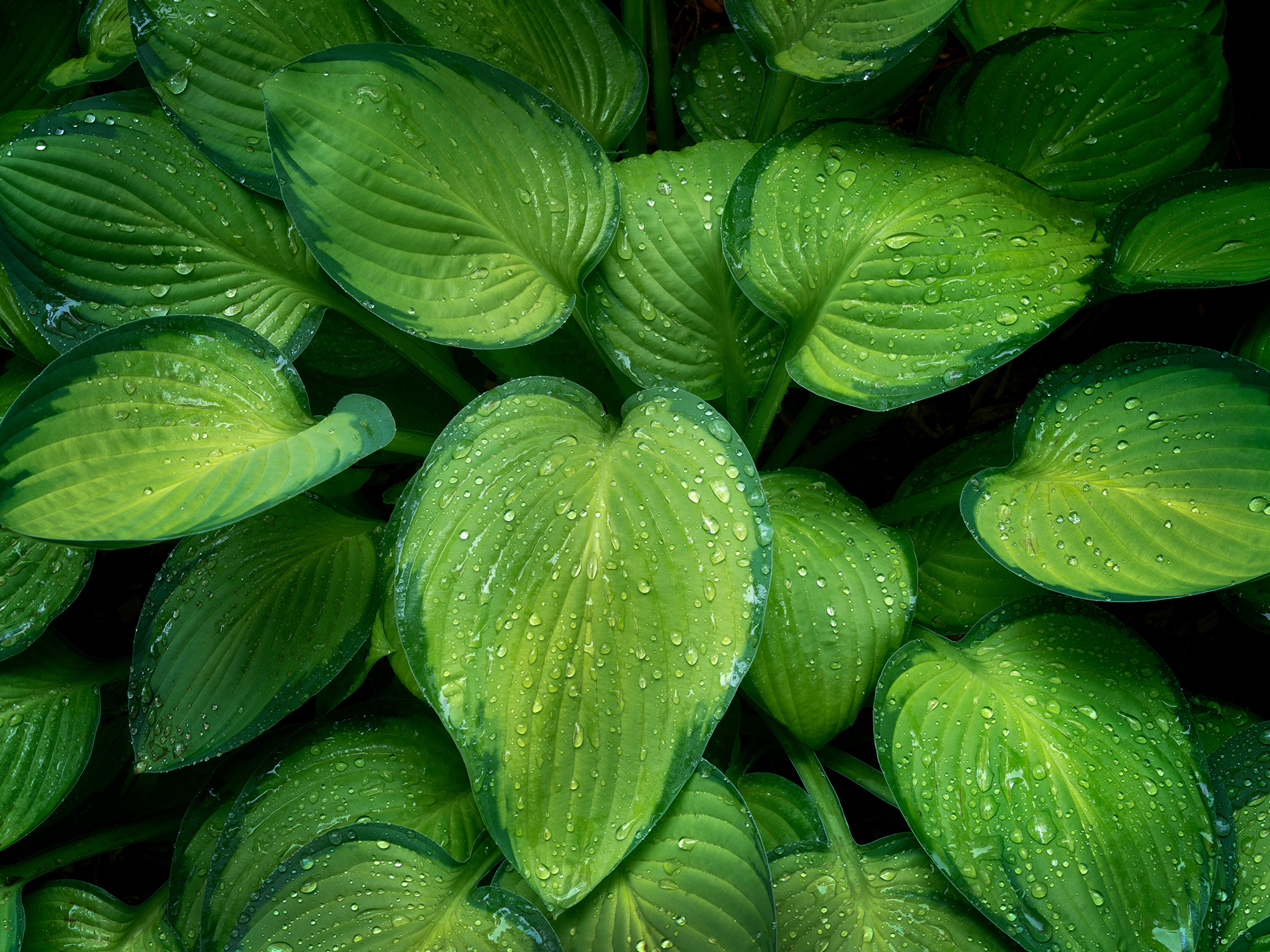
Hostas are herbaceous perennials, totally tolerant of shade, and primarily grown for their wide range of leaves, although they do have spires of flowers in summer.
As they like moisture-retentive soils, they work well as marginal water garden plants. Planting hostas by a pond that has frogs will keep down the snails, as these pests are the biggest issue that can spoil the attractive leaves.
9. Rodgersia

With their frothy spires of blooms, these late summer flowers are lovely as marginal or bog plants. Rodgersias prefer part sun and will die back in winter but then renew again come spring. Over time they gradually expand their clumps by rhizomes and can also be divided in spring. Mixing with ferns can create a nice combination.
What garden plants can live in water?
There are many garden plants that can live in water. In addition to water lilies, Iris versicolor, marsh marigold, and dwarf reef mace, there are many more, including water mint, water forget-me-not, fanwort, creeping jenny, and papyrus. These include those that grow submerged in the water, some that float on the surface, or those that can be planted in shallow water on the margins.
Visit a local aquatic plant nursery or search online for the many varieties available.
What are the best plants for a container pond?
The best plants for a container pond are those that will not grow too large, or take over and can be easily contained. Included among these are dwarf water lilies, water mint, and creeping jenny, but there will be many other varieties to choose from depending on the look you wish to achieve with your container pond.
Sign up to the Homes & Gardens newsletter
Design expertise in your inbox – from inspiring decorating ideas and beautiful celebrity homes to practical gardening advice and shopping round-ups.

Leigh Clapp is a professional photographer with over 25 years experience, primarily as a garden specialist photojournalist but also with food and travel. She delights in exploring gardens, discovering the tiny elements to their overall essence and meeting lots of enthusiastic gardeners along the way. Leigh’s work appears in magazines, newspapers and books, both in the UK and abroad, including Period Living, Country Life, and Gardens Illustrated; as well as being sole photographer for a number of books, including Garden Details, Feng Shui in the Garden, Vertical Gardens and From the Garden – fresh seasonal cooking.
-
 5 surprising but brilliant ways to clean with old socks – from perfectly buffing stainless steel to deterring pests naturally and more
5 surprising but brilliant ways to clean with old socks – from perfectly buffing stainless steel to deterring pests naturally and moreTackle dust in tricky corners, clean your mirrors and even banish bad odors with those rogue single socks
By Andy van Terheyden Published
-
 How to grow astilbe – expert advice on cultivating this shade-tolerant flowering perennial
How to grow astilbe – expert advice on cultivating this shade-tolerant flowering perennialShade-tolerant and pest-resistant - astilbe are hardy and tough perennials that can thrive in many settings
By Ellen Wells Published